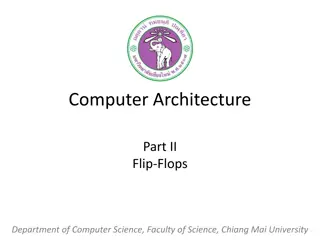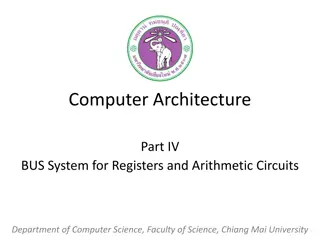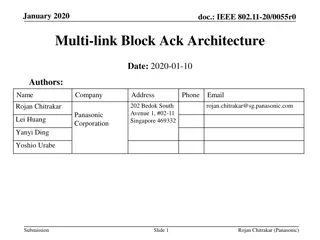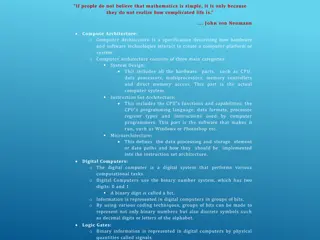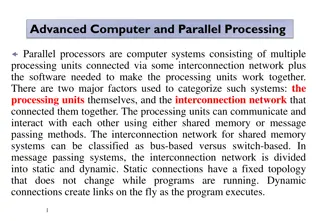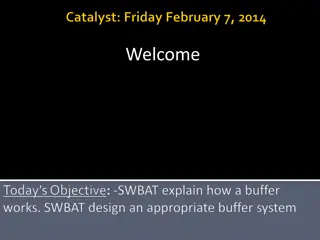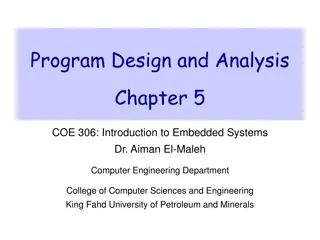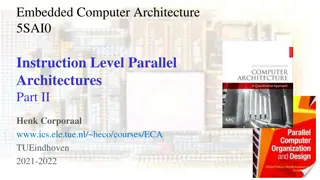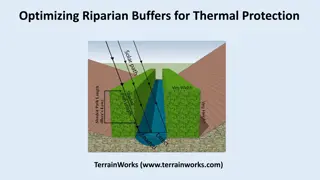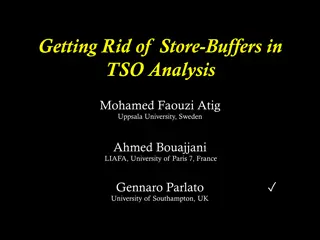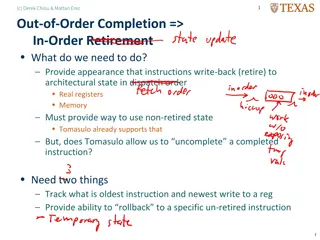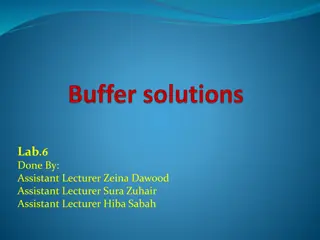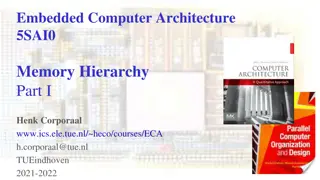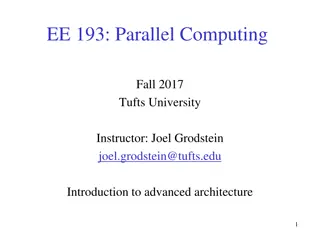Reorder Buffers in Computer Architecture
Explore the concept of Reorder Buffers (ROB) in computer architecture as a crucial component for precise interrupts and branch handling. Developed by a collaborative effort from notable professionals, delve into topics like branch predictors, speculation mechanisms, and practical examples of ROB operations. Gain insights into the importance of speculation accuracy, recovery mechanisms, and trade-offs for enhanced overall performance in computing systems.
Download Presentation

Please find below an Image/Link to download the presentation.
The content on the website is provided AS IS for your information and personal use only. It may not be sold, licensed, or shared on other websites without obtaining consent from the author.If you encounter any issues during the download, it is possible that the publisher has removed the file from their server.
You are allowed to download the files provided on this website for personal or commercial use, subject to the condition that they are used lawfully. All files are the property of their respective owners.
The content on the website is provided AS IS for your information and personal use only. It may not be sold, licensed, or shared on other websites without obtaining consent from the author.
E N D
Presentation Transcript
EECS 470 Adding a RoB Lecture 7 Winter 2024 Slides developed in part by Profs. Austin, Brehob, Falsafi, Hill, Hoe, Lipasti, Martin, Roth, Shen, Smith, Sohi, Tyson, Vijaykumar, and Wenisch of Carnegie Mellon University, Purdue University, University of Michigan, University of Pennsylvania, and University of Wisconsin.
Last time: Covered branch predictors Direction Bimodal, local history, global, gshare, tournament Address BTB RAS (briefly)
General speculation Control speculation I think this branch will go to address 90004 Data speculation I ll guess the result of the load will be zero Memory conflict speculation I don t think this load conflicts with any proceeding store. Error speculation I don t think there were any errors in this calculation
Speculation in general Need to be 100% sure on final correctness! So need a recovery mechanism Must make forward progress! Want to speed up overall performance So recovery cost should be low or expected rate of occurrence should be low. There can be a real trade-off on accuracy, cost of recovery, and speedup when correct. Should keep the worst case in mind
Precise Interrupts and branches via the Reorder Buffer @ Alloc Allocate result storage at Tail @ Sched Get inputs (ROB T-to-H then ARF) Wait until all inputs ready @ WB Write results/fault to ROB Indicate result is ready @ CT Wait until inst @ Head is done If fault, initiate handler Else, write results to ARF Deallocate entry from ROB Any order MEM EX IF ID CT Alloc Sched In-order In-order ROB ARF PC Dst regID Dst value Except? Reorder Buffer (ROB) Circular queue of spec state May contain multiple definitions of same register Head Tail
Reorder Buffer Example ROB Code Sequence regID: r8 result: 2 Except: n regID: f1 result: ? Except: ? f1 = f2 / f3 r3 = r2 + r3 r4 = r3 r2 H T regID: r8 result: 2 Except: n regID: r3 result: ? Except: ? regID: f1 result: ? Except: ? Time Initial Conditions - reorder buffer empty - f2 = 3.0 - f3 = 2.0 - r2 = 6 - r3 = 5 H T regID: r8 result: 2 Except: n regID: r4 result: ? Except: ? regID: r3 result: 11 Except: N regID: f1 result: ? Except: ? r3 H T
Reorder Buffer Example ROB Code Sequence regID: r8 result: 2 Except: n regID: r4 result: 5 Except: n regID: r3 result: 11 Except: n regID: f1 result: ? Except: ? f1 = f2 / f3 r3 = r2 + r3 r4 = r3 r2 H T regID: r4 result: 5 Except: n regID: r8 result: 2 Except: n regID: r3 result: 11 Except: n regID: f1 result: ? Except: y Time Initial Conditions - reorder buffer empty - f2 = 3.0 - f3 = 2.0 - r2 = 6 - r3 = 5 H T regID: r4 result: 5 Except: n regID: r3 result: 11 Except: n regID: f1 result: ? Except: y H T
Reorder Buffer Example ROB Code Sequence f1 = f2 / f3 r3 = r2 + r3 r4 = r3 r2 HT first inst of fault handler Time Initial Conditions - reorder buffer empty - f2 = 3.0 - f3 = 2.0 - r2 = 6 - r3 = 5 H T
There is more complexity here Rename table needs to be cleared Everything is in the ARF Really do need to finish everything which was before the faulting instruction in program order. What about branches? Would need to drain everything before the branch. Why not just squash everything that follows it?
And while were at it Does the ROB replace the RS? Is this a good thing? Bad thing?
ROB ROB ROB is an in-order queue where instructions are placed. Instructions complete (retire) in-order Instructions still execute out-of-order Still use RS Instructions are issued to RS and ROB at the same time Rename is to ROB entry, not RS. When execute done instruction leaves RS Only when all instructions in before it in program order are done does the instruction retire.
CDB T Tomasulo Data Structures (Timing Free Example, P6 scheme ) V Map Table Reg Tag r0 r1 r2 r3 r4 Reservation Stations (RS) T FU busy op 1 2 3 4 5 ARF Reg V r0 r1 r2 r3 r4 RoB T1 T2 V1 V2 Instruction r0=r1*r2 r1=r2*r3 Branch if r1=0 r0=r1+r1 r2=r2+1 Reorder Buffer (RoB) RoB Number Dest. Reg. Value 0 1 2 3 4 5 6
Review Questions Could we make this work without the RS? If so, why do we do that? Why is it important to retire in order? Why must branches wait until retirement before they announce their mispredict? Any other ways to do this?
More review questions 1. What is the purpose of the RoB? 2. Why do we have both a RoB and a RS? Yes, that was pretty much on the last page 3. Misprediction a) When to we resolve a mis-prediction? b) What happens to the main structures (RS, RoB, ARF, Rename Table) when we mispredict? 4. What is the whole purpose of OoO execution?
And yet more review questions! 1. What is the purpose of the RoB? 2. Why do we have both a RoB and a RS? 3. Misprediction a) When to we resolve a mis-prediction? b) What happens to the main structures (RS, RoB, ARF, Rename Table) when we mispredict? 4. What is the whole purpose of OoO execution?
When an instruction is dispatched how does it impact each major structure? Rename table? ARF? RoB? RS?
When an instruction completes execution how does it impact each major structure? Rename table? ARF? RoB? RS?
When an instruction retires how does it impact each major structure? Rename table? ARF? RoB? RS?
Topic change Why on earth are we doing this? Why do we think it helps? Homework 2 problems 5 and 6 made the argument. Only need to obey true data dependencies. Huge speedup potential.
Optimizing CPU Performance Golden Rule: tCPU= Ninst*CPI*tCLK Given this, what are our options Reduce the number of instructions executed Reduce the cycles to execute an instruction Reduce the clock period Our first focus: Reducing CPI Approach: Instruction Level Parallelism (ILP)
Why ILP? Requirements Parallelism Large window Limited control deps Eliminate false deps Find run-time deps Vs.
How Much ILP is There? (Chapter 3.10)
ALU Operation GOOD, Branch BAD Expected Number of Branches Between Mispredicts E(X) ~ 1/(1-p) E.g., p = 95%, E(X) ~ 20 brs, 100-ish insts
Impact of Physical Storage Limitations Each instruction in flight must have storage for its result Really worse than this because of mispeculation
Registers GOOD, Memory BAD Benefits of registers Well described deps Fast access Finite resource Memory loses these benefits for flexibility *p = *q = ? = *p
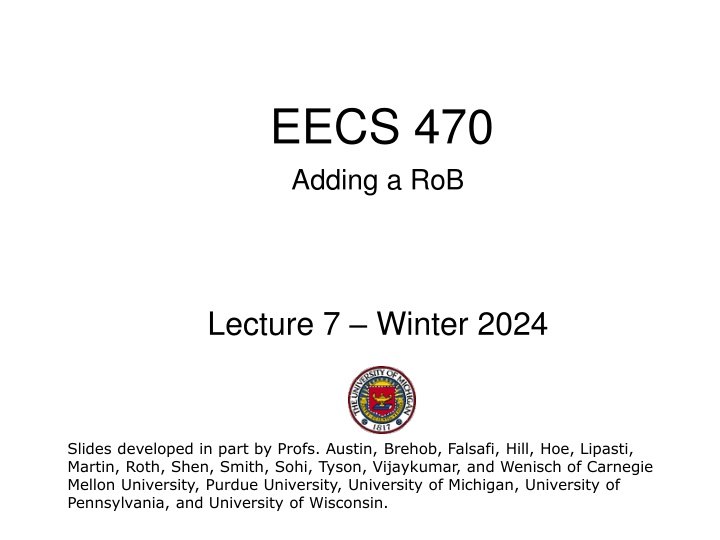

![❤Book⚡[PDF]✔ The Apollo Guidance Computer: Architecture and Operation (Springer](/thumb/21611/book-pdf-the-apollo-guidance-computer-architecture-and-operation-springer.jpg)



